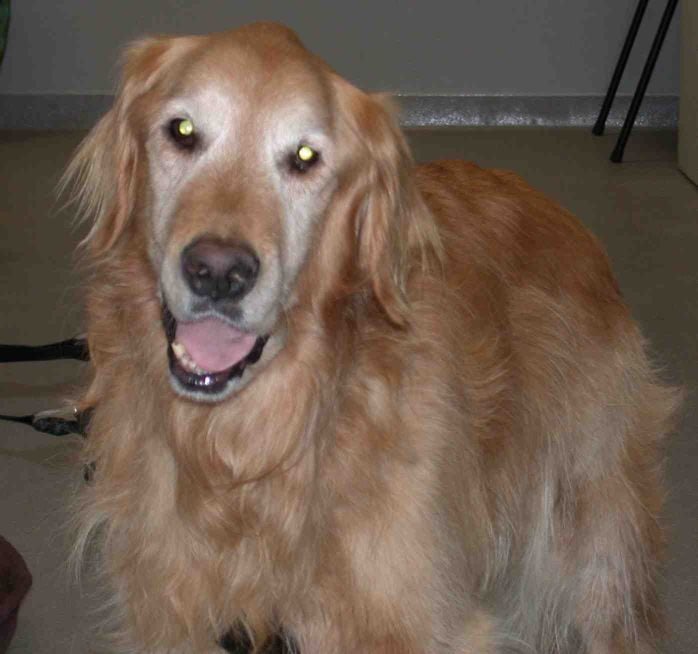A 10-year old Golden Retriever presents with a history of unsteady gait. The owner reports she is walking like she is drunk and she has vomited a few times. You are taking a history in the room and notice her tilting her head to the left. Upon closer look at her face you see that her eyes are moving side to side rapidly. The veterinarian asks you to perform a blood pressure. The blood pressure is 200/120 mmHg. Answer the quiz questions, then scroll to the bottom for the answer explanations.

1) What medication may help to treat hypertension (high blood pressure) in this dog?
a) Benazepril
b) Prednisone
c) Phenobarbital
d) Furosemide
2) The condition from which this dog is suffering is also known as which of the following?
a) Vasculitis
b) Vestibular syndrome
c) Disseminated Intravascular Coagulation (DIC)
d) Syncope
3) Which cranial nerve is likely involved in this process?
a) cranial nerve III (oculomotor)
b) cranial nerve VII (facial)
c) cranial nerve VIII (vestibulocochlear)
d) cranial nerve V (trigeminal)
4) Which endocrine disease is often associated with hypertension?
a) Cushing's disease
b) Addison's disease
c) Diabetes mellitus
d) Hypothyroidism
5) The eyes moving side to side rapidly is also known as:
a) Vertigo
b) Nystagmus
c) Postural thrust
d) Bupthalmous
Answers: This dog is exhibiting symptoms of vestibular syndrome, which has many possible causes. Because this dog has a very high blood pressure (should be less than 150 systolic in a nervous dog), the likely cause is a vascular accident (a stroke type of event).
Hypertension can be sometimes be associated with Cushing's syndrome in dogs, and with hyperthyroidism in cats. Hypertension in dogs may be treated with benazepril and/or amlodipine. Amlodipine is the treatment of choice for cats.
Vestibular syndrome is a results of the inflammation or disturbance of cranial nerve VIII (8), the vestibulocochlear nerve which helps with sound in the ear and with equilibrium (balance). Dogs that have vestibular syndrome are often nauseated and have a history of vomiting. The eyes moving back and forth or side to side is also known as a nystagmus.
For further information on vestibular disease, hypertension, and cranial nerves, please visit our other blog pages on these important topics:
Vestibular Disease Review
The Dangers of Hypertension
Review on Cranial Nerves


